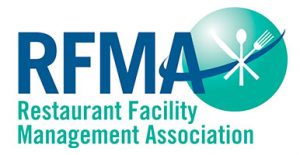4 DIY Quick Fixes to Save Energy & Money in Your Commercial Walk-in Coolers and Freezers
The typical school district, grocery or convenience store uses energy in a variety of ways: heating, cooling, ventilation, lighting, computer equipment…
You might think that all those things individually require a lot of electricity, let alone the monstrous amount of energy they consume when combined. And they do.
But there’s one single consumer of energy that trumps them all: Refrigeration.
A little more than half (55%) of a facilities energy is consumed through its refrigeration system alone. Imagine, one source of electricity is consuming more energy than all the other sources combined.
Now, as an owner or facility manager, you may not think much about your refrigeration costs because they might be small potatoes compared to your overall operational costs. But even the smallest improvements in the energy efficiency of your commercial refrigeration can increase profits—by as much as 10%.
Here are four DIY quick ways to do just that.
- Clean your evaporator coils. Sounds silly, right? But the buildup of dirt and ice on evaporator coils slows down the heat transfer process, causing your refrigeration system to use more energy. It only takes a few minutes to clean the coils, and if you make it a part of your regular maintenance schedule you’re less likely to forget to do it.
- Check your temperature settings. Your refrigeration system has a recommended temperature level that is optimal for best performance. Temps that drift below the recommended level may be wasting energy and costing you money. Common settings for freezers are between -14 and -8F and between 35 and 38F for coolers. Be sure to double check your system’s optimal temperatures and keep them there.
- Check the refrigerant charge. Incorrect refrigerant charge can reduce refrigeration equipment efficiency by 5 to 20% and raises the risk of early component failure. Get in the habit of checking the refrigerant charge annually. A licensed technician can help you with this.
- Inspect for air leakage. Worn seals and gaskets on walk-in cooler and freezer doors may allow heat to enter the space, making your refrigeration system work overtime. Be sure to replace them at the first sign of wear. Also, always make sure doors are closed tightly or install automatic door closers to prevent increased energy use. Adding strip curtains to the doors of walk-in coolers can help, too. If any penetrations are made into the box make sure they properly seal the penetrations to prevent warm air from entering the box.
These measures are simple and easy fixes that offer a quick payback. Better still, they can easily be added to your maintenance schedule to help you better manage your store’s energy costs.
Got questions? We want to hear from you! Call our Technical Engineers at Refrigeration Technologies, LLC at 888-286-3091!








